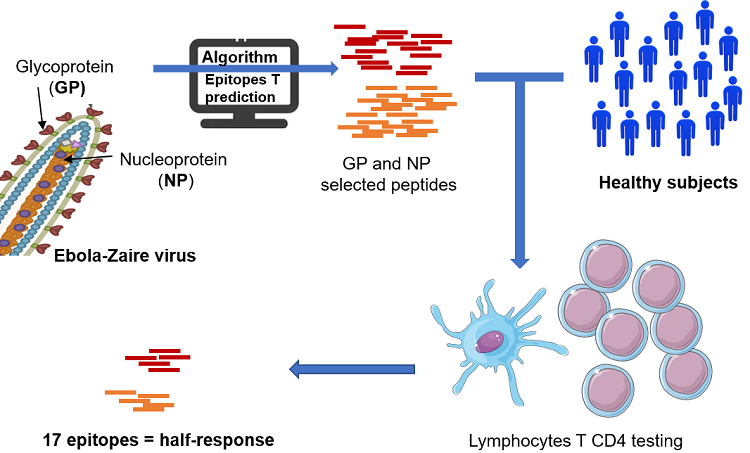Humankind faces regular outbreaks from emerging viruses, such as Ebola and the current SARS-CoV-2, or from viruses circulating at low levels in the wild animal reservoir. Owing to the suddenness of virus expansion, the lack of knowledge of immune determinants and correlates of protection severely limit the ability to address the outbreaks.
Identified in 1976, Ebola virus is part of the Filoviridae family and causes severe hemorrhagic fever with a mortality rate between 50% and 90%. High antibody titers against Ebola virus GP are found in patients recovering from Ebola virus infection and correlate with protection in vaccination models. Both CD8 and CD4 T-cell responses also seem to participate in the control of Ebola virus infection in animals, and CD4 T-cells are necessary to induce resistance to Ebola virus challenge. In addition to GP, NP induces strong T-cell responses in animal models that protect against Ebola virus infection, and in convalescent Ebola patients, most of the T-cell responses mounted against Ebola virus were found to target NP. However, very few T-cell epitopes specific for both the Ebola GP and NP proteins have yet been identified in humans.
In order to map and characterize the CD4 T-cell responses to these two proteins, the researchers established a large-scale approach to identify CD4 T-cell epitopes in healthy donors. The originality of the approach is the use of cells collected from people who have never been in contact with the virus (healthy donors). The study was also conducted outside of any infectious context in donors. Collected T-cells were used to generate specific T cell lines, stimulated by GP and NP peptides derived from the Ebola-Zaire virus. 27 NP peptides and 33 GP peptides, selected for their ability to bind the HLA-DR molecules predominant in African and European populations, were selected. The specificity of CD4 T-cells in response to peptides was analyzed. The researchers identified 17 CD4 T-cell epitopes from the NP and GP proteins of Ebola Zaire, summarizing approximately half the magnitude of the T-cell response and generating a T-cell response in all of the donors tested. These epitopes therefore appear to be the most important CD4 T-cell epitopes for the Ebola response. The authors suggest that components of the NP protein may be included in the design of new Ebola vaccines.

Scheme of the strategy used to analyze the response of T lymphocytes to 2 proteins of the Ebola-Zaire virus. Credits: Yann Gallais and Bernard Maillère/CEA
Knowing that candidate vaccines contain only components of the GP protein, the results of this study reveal several epitopes of CD4 T-cells originating from the NP protein, making NP a relevant target for inducing a strong response of CD4 T lymphocytes to Ebola virus. In addition, the approach used here would make it possible to anticipate the response of T lymphocytes before any infection, valuable information in the era of the emergence and the health crisis of COVID-19.
The work of the team of Bernard Maillère (Simos) was conducted as part of the European project PEVIA supported by the Innovative Medicine Initiative (IMI).